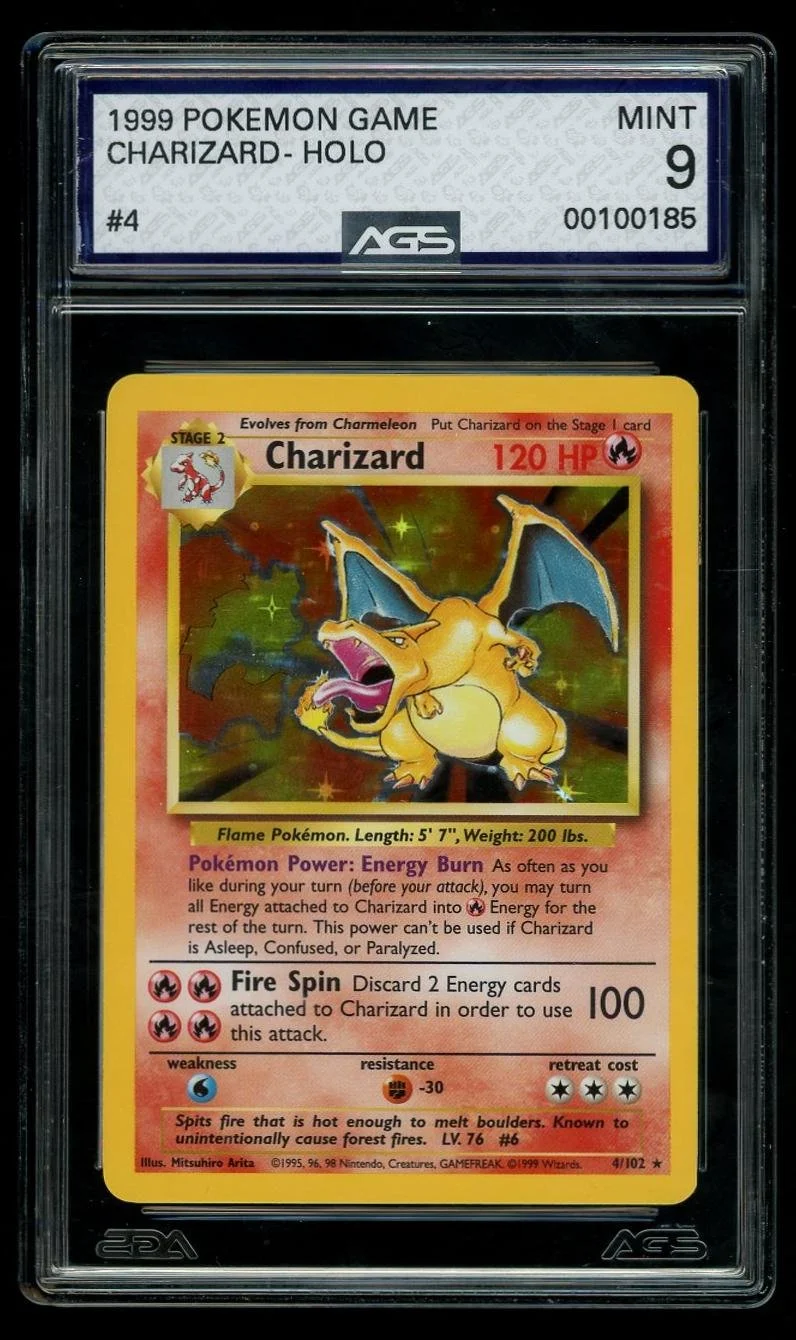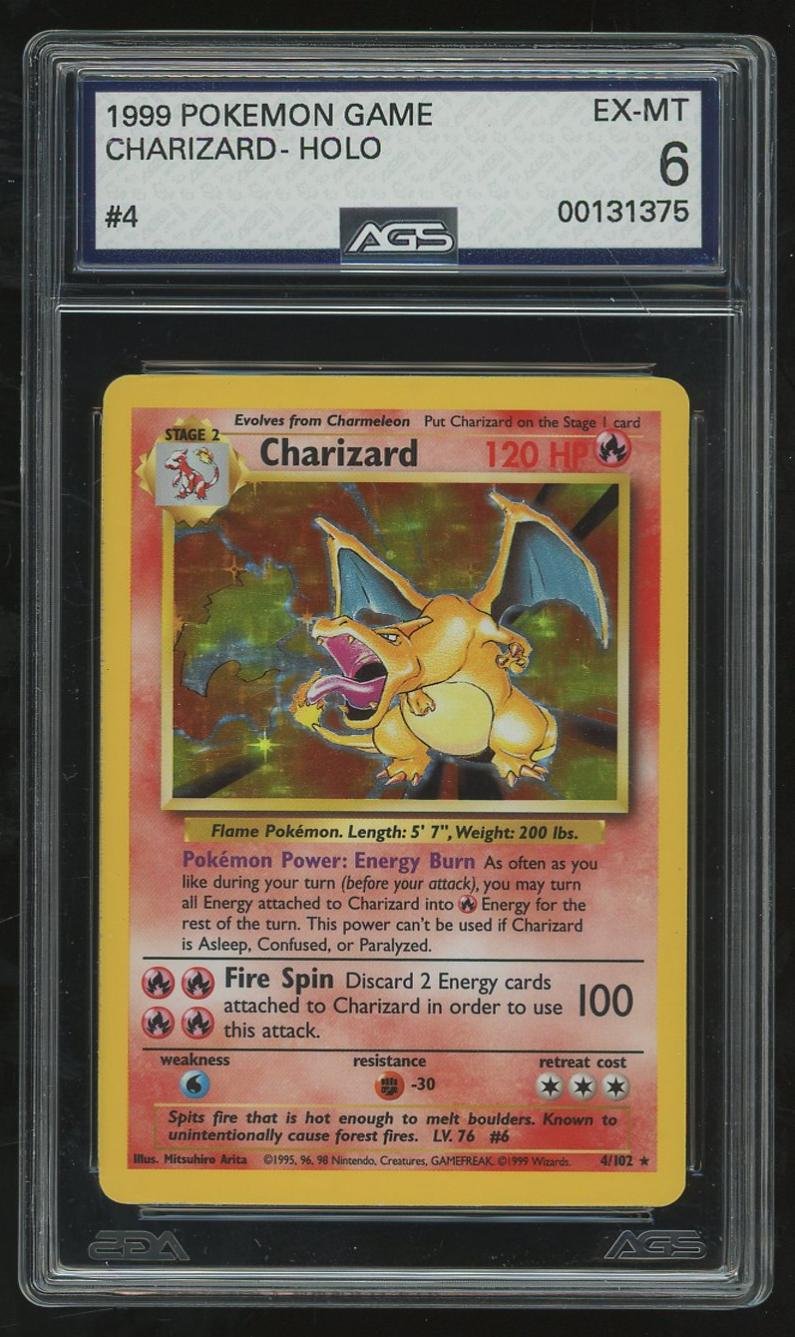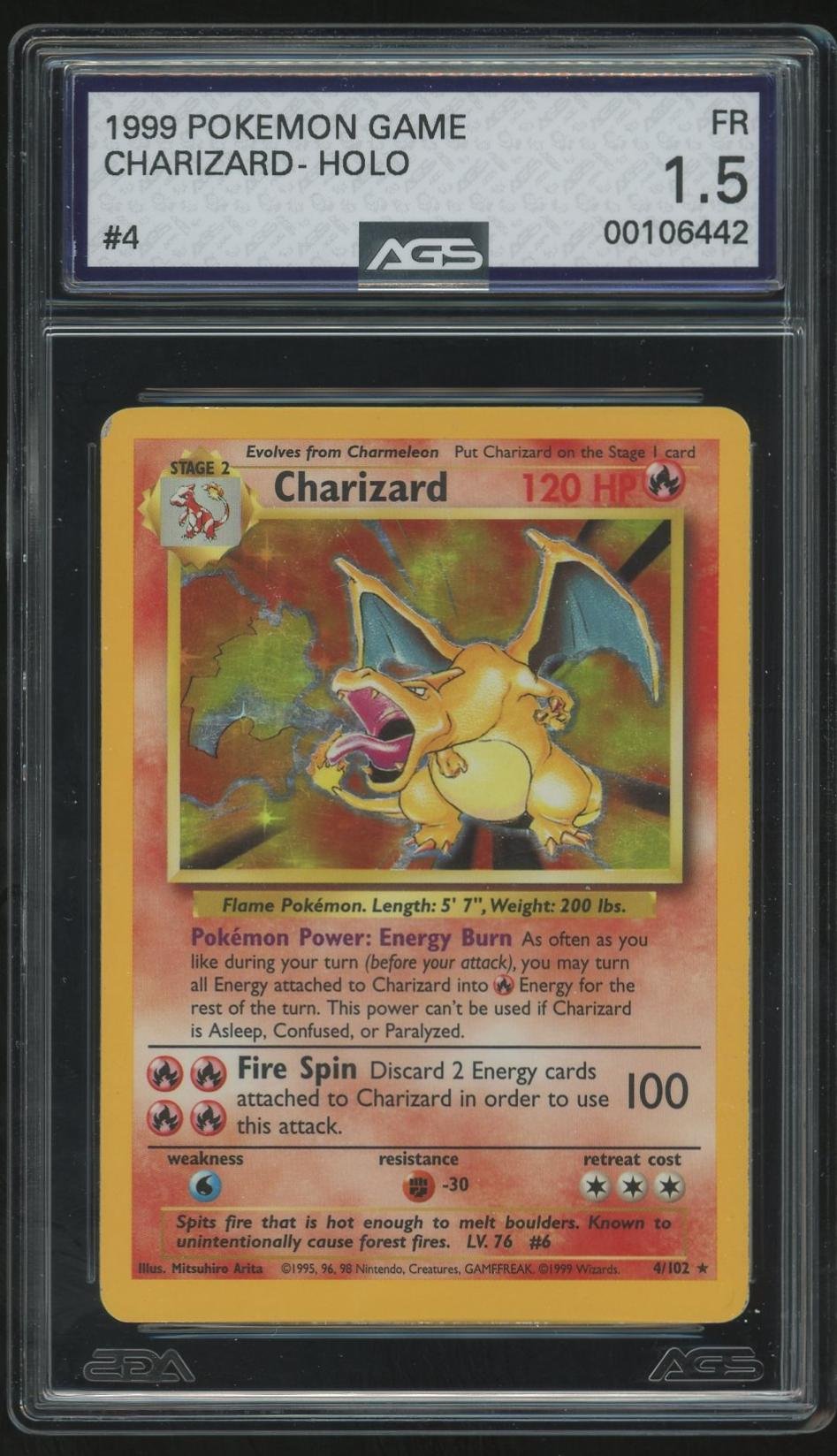
AGS Grading Standards
Discover the intricacies of AGS grading methodology, where the evaluation process hinges on subgrades like centering, edges, corners, and surface.
General Calculation
To understand how AGS calculates grades it is important to understand the role of subgrades. The subgrades are centering, edges, corners, and surface. Each card grade begins with 8 subgrades - 4 for front and 4 for back. These are automatically generated by the RoboGrading AI. From these eight subgrades AGS calculates overall grades for each side of the card - front and back:
The Final Grade of a card is then generated from the aforementioned overall grades:
Final Grade = (Front Overall Grade)*0.6 +(Back Overall Grade)*0.4
Additionally, it's important to note the rounding system employed for decimal points in the Final Grade:
If the decimal point falls between 0 and 0.24, it is rounded down.
If the decimal point falls between 0.25 and 0.74, it is rounded to 0.5.
If the decimal point is 0.75 or higher, it is rounded up.
Special Cases
Excessive Defect Limit
The overall grade cannot exceed the lowest subgrade by more than 1 point. Meaning, if RoboGrading gave a card a Final Grade of 7 but the Overall Surface is a 5 then the card is automatically marked as a Final Grade 6.
Crease Override
If a card has a single crease not exceeding 1 inch along its area then its maximum overall grade is a 5. If a card has one crease exceeding 1 inch along its area or multiple creases, then its overall grade cannot exceed a 4.
Vintage Cards
If a card has been manufactured before 2016, RoboGrading will add a boost factor to the subgrades generated by RoboGrading ranging from 1-5% depending on the identified systematic errors associated with that set in our database.
Error Cards
If a card is a known error card the error will not affect the relevant subgrade. The card may be marked as an ERROR card and given subgrades for non-error related features.
RoboGrading AI
RoboGrading is an autonomous system for grading and evaluating cards. It does so using a set of digital neural networks trained by the AGS team using extensive card data acquired from the AG-1000 and AG-1500 series of laser card scanners.
In this context, think of a neural network as a digital brain made up of math. This digital brain learns like we humans do - making connections and identifying patterns - but in the digital world.
A neural network is often called a “model”. This model is representative of mathematical matrices and weights that align with a certain input and generate an output based on training. The internal workings of a model are somewhat of a black box but the output can be remarkably accurate and useful.
3 models of Robograding
Centering Model
This model uses something called semantic segmentation to visually isolate a card from an image and draw its centering lines for the inner border and outer border of the card. This model uses both the card’s image and laser file.
Defect Model
This model also uses semantic segmentation to identify any and all defects on the card - whitening, scratches, creases, stains, print lines, tears, etc. It then draws the defects on the cards - also known as annotation. This model uses both the card’s image and laser file.
Grading Model
This model generates subgrades based on results from the previous models. Using computer vision the card images are split into edges, corners, and surface. These along with their annotations, border drawings, and card files are sent to the grading model, which generates subgrades.
The first two models are purely mechanical - they identify and annotate both borders and defects, respectively. The grading model follows a rubric based on defect size, defect depth, and defect location. Laser data files provide a depth matrix, while the defect size is based on the size of an annotated area. Defect location is based on where the defect is on the card. The model’s “black box” understands that defects on prominent aspects of a card (primary holo art area, for example) and defect types (e.g. crease vs scratch) count more towards a grade deduction than others. Deductions are made on the card using these 3 factors on each component of the card except centering. For centering, a statistical model is used based on border angles, parallelism, and symmetry between inner and outer border distances.
AGS grading scale
AGS GEM-MT+ LEGENDARY 10
An AGS 10 Legendary card epitomizes perfection. On an AGS Legendary card - all eight subgrades on front and back receive a 10. Edges and corners are sharp and void of defect. The surface is absolutely flawless. Centering is perfect (50/50 to 55/45). This grade is extremely rare. View here
AGS GEM-MT+ 10
An AGS 10 is a flawless card. Qualities include no visible defects, nearly perfect centering (55/45 to 60/40), sharp edges and corners, and little to no manufacturing defect. Minor imperfections may be acceptable if it doesn’t limit the card’s overall appeal. On such cards most of the subgrades are 10s.
View here
AGS MINT 9
AGS NM-MT 8
AGS NM 7
An AGS 7 is a card with surface wear visible upon inspection with possible fraying on corners. The overall appeal of the card will be maintained and the card may not have any creases or major damage.
View here
AGS EX-MT 6
An AGS 6 card may have visible surface wear or a printing defect. A very light major defect may be detected upon close inspection. Corners may have slightly graduated fraying or clusters of minor defects. Light notching and staining are also allowed here. View here
AGS EX 5
In AGS 5 cards, you may notice general wearing of the corners starting to emerge. Surface wear or printing defects may become more noticeable, and there could be minor chipping along the edges. The original appeal of the card may show signs of fading, and the picture's focus might be slightly off-register. Upon close inspection, you might observe a few light scratches, but they won't significantly diminish the card's appeal. Some off-whiteness of borders may be present.
View here
AGS VG-EX 4
In AGS 4 cards, you might observe general wearing of the corners. Surface wear is noticeable but not extensive. There may be light scuffing or scratches present, and some original appeal will still be retained. Borders may exhibit a slight off-white tint. You may notice a light crease on the card.
AGS VG 3
In AGS 3 cards, you may notice general wearing of the corners, although not excessively so. Surface wear will be evident, possibly accompanied by light scuffing or scratches. The focus of the image may be slightly off-register, and the edges may show noticeable signs of wear. While much of the original appeal of the card may be lost, some appeal may still remain. Borders may display some yellowing or discoloration. You might observe a visible crease on the card, and there is a possibility of printing defects. Additionally, slight staining may be present on the obverse, and wax staining on the reverse may be more noticeable.
View here
AGS GOOD 2
In AGS 2 cards, you'll likely notice accelerated wearing of the corners, indicating significant wear. Surface wear becomes increasingly evident, with scratching, scuffing, light staining, or even chipping of enamel on the obverse possible. Multiple creases may be present on the card. Original gloss may be entirely absent, and considerable discoloration may be apparent.
View here
AGS FR 1.5
In AGS 1.5 cards, you'll observe extreme wear, particularly evident in the corners which may affect the framing of the picture. The surface of the card will exhibit advanced stages of wear, including scuffing, scratching, pitting, chipping, and staining. The picture may appear significantly out-of-register, and the borders may have become brown and dirty. Heavy creases may also be present. To achieve a Fair grade, the card must remain fully intact. While heavy wear is acceptable, the card cannot achieve this grade if it is missing solid pieces, such as due to a major tear. This includes damage such as the removal of the back layer of the card or an entire corner.
View here
AGS PR 1
In AGS 1 cards, similar to AGS 1.5, you'll find many of the same defects, but they may have progressed to an even more serious stage, nearly completely diminishing the eye appeal of the card. A Poor card could be missing one or two small pieces, display major creasing that almost breaks through all layers of cardboard, or show extreme discoloration or dirtiness throughout, making it challenging to identify the issue or content of the card on either the front or back. Additionally, such a card may exhibit noticeable warping or another type of destructive defect.
View here















